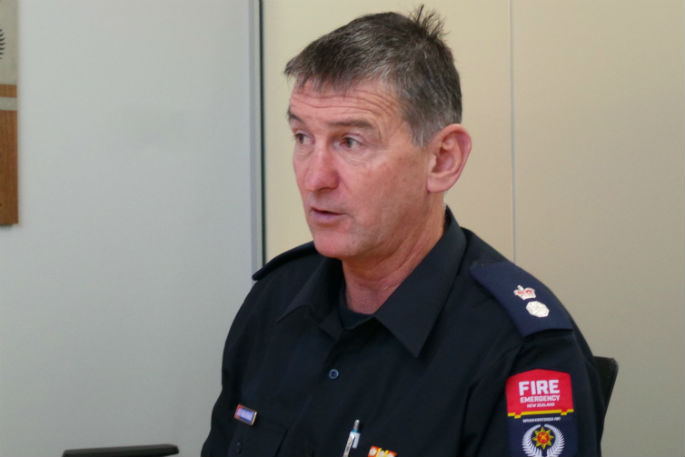The New Zealand Fire Service dissolves into history today in the biggest change to New Zealand fire fighting in a generation.
July 1 marks the inauguration of Fire and Emergency New Zealand, and the amalgamation of 40 rural and urban fire fighting units into one organisation.
The start of the new organisation is being marked up and down the country with vary degrees of ceremony. But while they can pull down the old NZFS flag they cannot yet replace it with the new Whakaratonga Iwi flag – because there aren't any, yet.
Whakaratonga Iwi is the new Fire emergency New Zealand motto and is adopted because it reflects the desire of the service to continue to be seen as serving its people.
From today it becomes the largest emergency management organisation in the country with 14,100 people.
'It's a huge organisation, most of them volunteers still. Police are only 10,000, it's massive,” says acting area manager Kevin Cowper.
The new service is still going to be mostly volunteers.
'It's still a big ask to integrate 41 organisations into one. Some of them are quite large, Pumicelands Rural Fire District which covers most of the central North Island. That's quite a large rural fire district. Coromandel has got three, (rural fire districts) so we are bringing them all together.”
It's the biggest shake up in the fire service since the sector reform in the aftermath of the fatal Ballantyne's fire in Christchurch in 1947.
Current law, organisations, and funding have not kept up with changes in tasks. Currently the 41 urban and rural organisations are unevenly funded and equipped and can be difficult to co-ordinate.
The new name Fire and Emergency New Zealand covers a lot of what the fire service has actually been doing but not supported for over recent decades.
Firefighters originally focussed on fires and they were funded by the insurance industry – to put out fires; but not to extract injured people from motor vehicle accidents, attend medical emergencies, hazardous material spillages and help out with storms flood and earthquakes – as well as still being called to pet animals stuck in trees or behind the walls of houses.
The changes have been going on behind the scene for about two years, and they are expected to take another three years, says Kevin.
'It's not all happening at once,” says Kevin. 'We've been given that time to get it right.”
The formation of Fire and Emergency New Zealand is supported by all the political parties, except for New Zealand First which withdrew its support because it did not like the funding model. It wants FENZ funded from general taxation.
FENZ is comprised of 8000 New Zealand Fire Service volunteers, plus 3,500 rural fire fighters plus 1800 paid fire fighters and 550 paid rural fire staff and 150 NZFS paid fire service. All paid employees are transferring under current pay and terms.
Volunteers are also to be treated as employees. They won't be paid but they are the responsibility of the FENZ in the same manner as employees.
Across the area from Waihi to East Cape, all the volunteer brigades are the responsibility of the area management, and it is their responsibility to look after those brigades, make sure they can operate as they are supposed to operate.
'One of the reasons we are making these changes is because it has been identified that we didn't treat our volunteers well,” says Kevin.
'One of the reasons we struggled to retain volunteers is because we don't make it easy enough for them, so we need to take cognisance of that and fix it up. And I would say the next three years is for that.”
Western Bay of Plenty Mayor Garry Webber and Bay of Plenty MP Todd Muller attended a morning tea with fire service staff following the briefing.



0 comments
Leave a Comment
You must be logged in to make a comment.